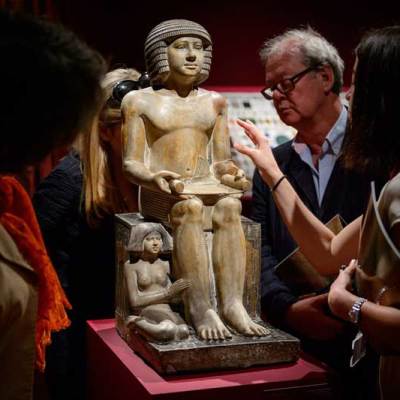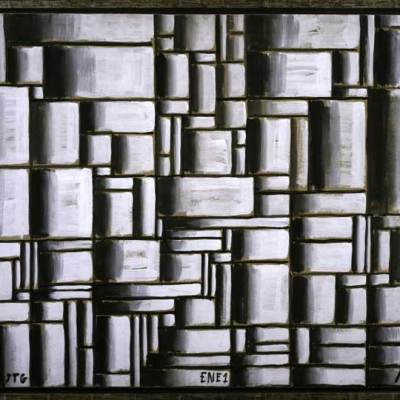The Wallace Line (named after the British naturalist Alfred Russel Wallace who identified it), marks the boundary between Asian and Australian ecozones; the point at which the flora and fauna begins to shift. ‘East of the Wallace Line: Monumental Art from Indonesia and New Guinea’ at the Yale University Art Gallery looks along this line, not at the natural world but at the region’s art and culture, tracing stylistic echoes and aesthetic links. We spoke to curator Ruth Barnes to find out more.
Click here for a gallery of highlights from the exhibition
Can you tell us a bit about the exhibition?
The exhibition explores the relationship between the art of eastern Indonesia and western coastal New Guinea. Although there is great cultural diversity in the region, there are aesthetic and iconographic links that connect. Throughout there is a preference for complex geometric patterns and scroll designs, as well as a similar treatment of the human form.
What makes this a distinctive show?
The objects on show have not been displayed before in the museum’s art gallery. It is the first major temporary exhibition of our Indo-Pacific collections, and it is an opportunity to show the grandest and most monumental of works alongside the more intimate and personal – the exotic together with the commonplace. Nationally, there are very few collections of art from this region that combine large sculptures and textiles with a range of high quality smaller scale items.
How did you come to curate this exhibition?
It is my job as the department’s curator to research, plan and curate exhibitions. Our permanent gallery’s ceiling is too low to show some of the grander pieces in our collection, so we were inspired by the large spaces in the newly renovated art gallery. We focused on art from eastern Indonesia and western New Guinea, where we happen to have a particularly strong collection.
 What is likely to be the highlight of the exhibition?
What is likely to be the highlight of the exhibition?
A monumental sculpture from Flores, representing a mythical horse-serpent that protects the village community, and three ceiling-height festival banners from Sulawesi.
And what’s been the most exciting personal discovery for you?
Planning an exhibition is full of anxiety and uncertainty about whether ideas of structure and aesthetics will translate well into reality. The actual installation, which requires working with a team of people who all have their own talent and expertise, always generates a deeply satisfying sense of creativity. I have curated many exhibitions in the past, but this sense of communal achievement never ceases to astonish me.
 What’s the greatest challenge you’ve faced in preparing this exhibition?
What’s the greatest challenge you’ve faced in preparing this exhibition?
Planning any exhibition is challenging, especially when one is working with art that may not be familiar to many of the museum’s visitors. It is difficult to present cultural concepts such as ancestor veneration or unfamiliar religious notions in a way that comes across to a wider audience, without losing subtlety.
How are you using the gallery space? What challenges will the hang/installation pose?
The gallery is the museum’s largest temporary exhibition space, with double-height ceilings and vast expanses of wall hanging space. I have opted not to use any dividing walls, to take full advantage of the room’s grandeur. The mixture of three-dimensional sculpture and two-dimensional textiles, and the display of both large and small objects in close proximity have required careful and detailed planning, with little room for last-minute corrections.
Which other works would you have liked to have included?
Actually I am able to display everything I wanted to include.
‘East of the Wallace Line: Monumental Art from Indonesia and New Guinea’ is at Yale University Art Gallery from 15 August 2014–1 February 2015.



